Hamamatsucho
2025.02.26
[Hamamatsucho] A Complete Guide to Enjoying Kabuki Performances at Kabukiza Theatre in Ginza, Tokyo
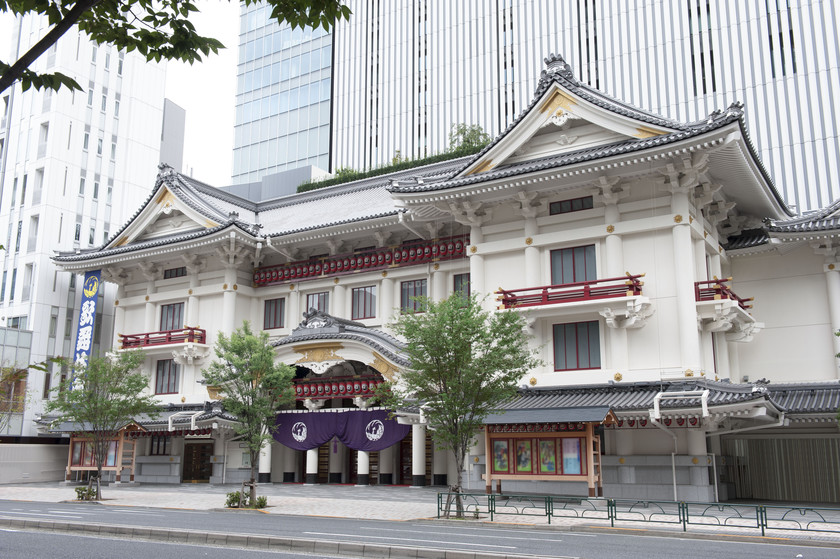
Tokyo is packed with experiences, but few feel as timeless as watching a kabuki performance at Kabukiza Theatre in Ginza. This isn’t just another tourist stop—it’s a glimpse into Japan’s rich artistic heritage, where centuries-old storytelling meets dramatic stagecraft. If you’ve ever been curious about kabuki but weren’t sure where to start, this guide will walk you through everything from securing Kabukiza tickets to understanding the unspoken rules of the theater.
Whether you're here for the spectacle, the tradition, or just looking for something a little different, there’s no better place to dive into the world of kabuki theater in Tokyo than right here.
Table of Contents
The History and Charm of Kabuki and Kabukiza Theatre
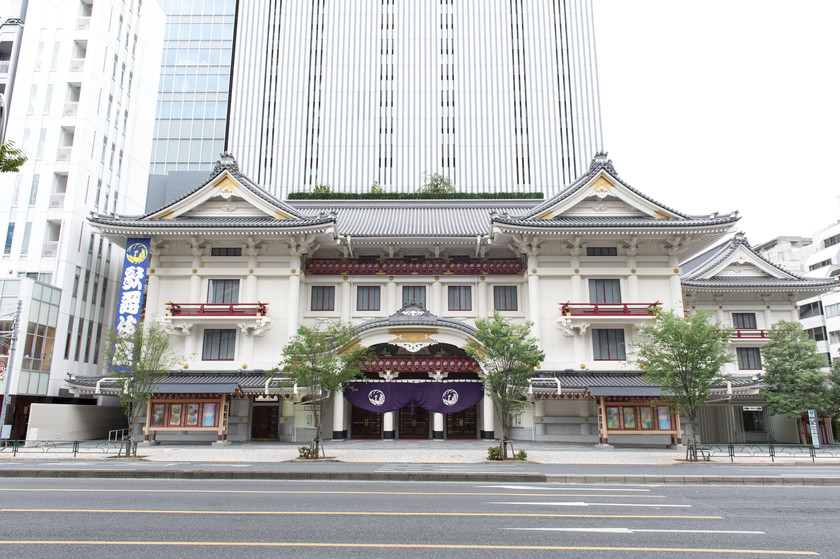 Kabuki is one of Japan’s most iconic performing arts, with a history spanning over 400 years. Known for its elaborate costumes, stylized movements, and dramatic storytelling, kabuki continues to captivate audiences today. Kabukiza Theatre, originally built in 1889, has gone through multiple reconstructions—the most recent in 2013—to preserve its grandeur while incorporating modern comforts.
Kabuki is one of Japan’s most iconic performing arts, with a history spanning over 400 years. Known for its elaborate costumes, stylized movements, and dramatic storytelling, kabuki continues to captivate audiences today. Kabukiza Theatre, originally built in 1889, has gone through multiple reconstructions—the most recent in 2013—to preserve its grandeur while incorporating modern comforts.Kabuki originated in the early 17th century when a woman named Izumo no Okuni began performing kabuki-odori, a theatrical mix of song, dance, and skits inspired by the flamboyant kabukimono, men who defied social norms with their extravagant clothing and rebellious behavior. As kabuki’s popularity soared, government restrictions reshaped the art, first banning women from performing and later restricting it to adult male actors, leading to the rise of onnagata, male actors who specialize in female roles.
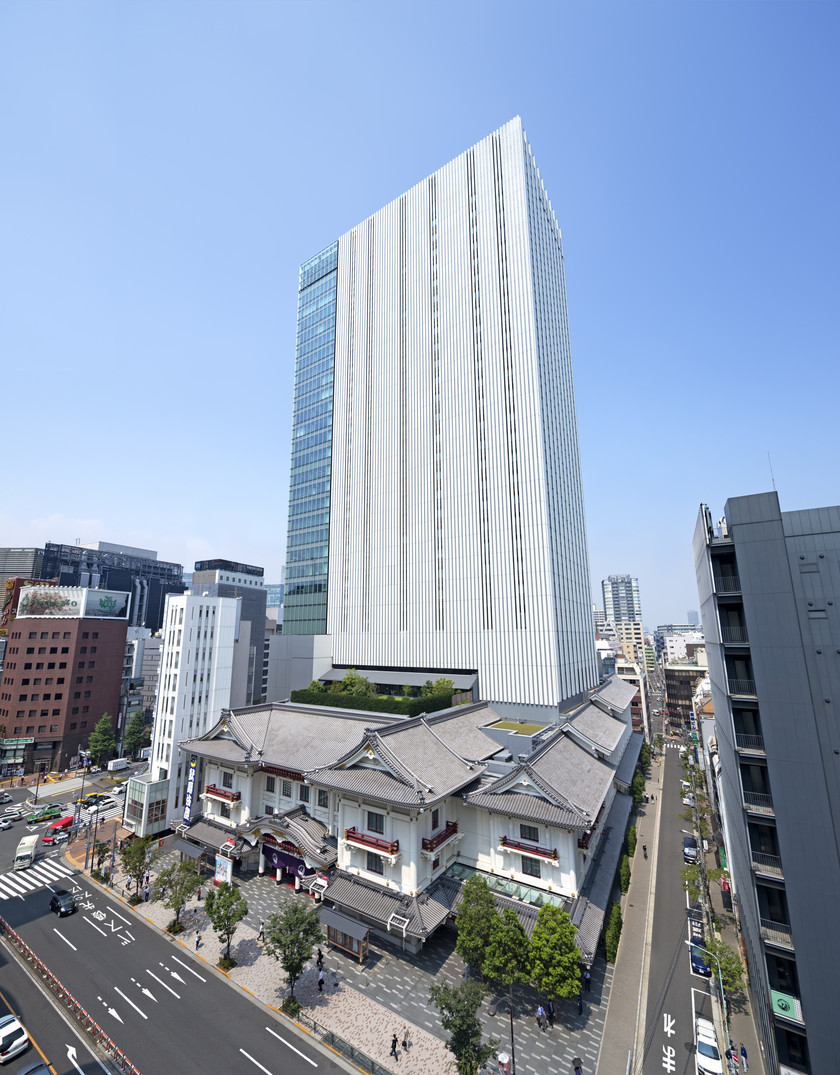 During Japan’s modernization in the late 19th century, kabuki adapted to changing tastes, incorporating Western influences while preserving its Edo-period aesthetics. Today, kabuki remains a vibrant cultural tradition, recognized by UNESCO as an Intangible Cultural Heritage. While deeply rooted in history, the art form continues to evolve, with new productions based on manga and anime attracting fresh audiences. At Kabukiza Theatre, visitors can experience this rich blend of tradition and reinvention firsthand.
During Japan’s modernization in the late 19th century, kabuki adapted to changing tastes, incorporating Western influences while preserving its Edo-period aesthetics. Today, kabuki remains a vibrant cultural tradition, recognized by UNESCO as an Intangible Cultural Heritage. While deeply rooted in history, the art form continues to evolve, with new productions based on manga and anime attracting fresh audiences. At Kabukiza Theatre, visitors can experience this rich blend of tradition and reinvention firsthand.
How to Make the Most of Your Kabuki Experience at Kabukiza
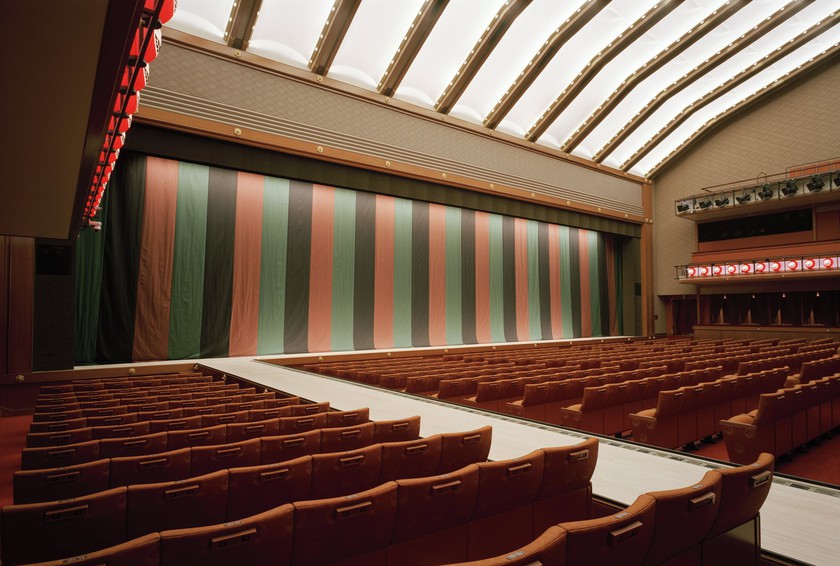 Kabuki is meant to be enjoyed. It’s not an art form reserved for scholars or theater buffs—it’s Japan’s version of grand entertainment. Think of it like opera: you don’t need to understand every word to appreciate the artistry, music, and sheer spectacle. That said, a little preparation can go a long way.
Kabuki is meant to be enjoyed. It’s not an art form reserved for scholars or theater buffs—it’s Japan’s version of grand entertainment. Think of it like opera: you don’t need to understand every word to appreciate the artistry, music, and sheer spectacle. That said, a little preparation can go a long way.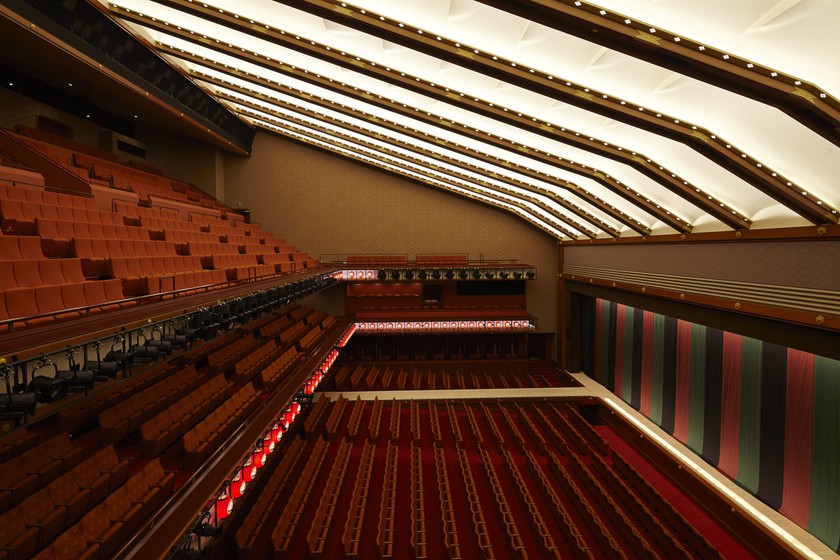 If you're watching a classic performance, reading a brief synopsis of the story in advance will make the experience even richer. Paid English captioning service for regular seats (first-floor to third-floor seats) is available for ¥1,500 at the door, providing real-time translations and insights into the play’s dialogue and historical context. Whether you’re catching a single act or settling in for a full show, be prepared for bold storytelling, over-the-top expressions, and striking visuals that feel like a live-action ukiyo-e painting.
If you're watching a classic performance, reading a brief synopsis of the story in advance will make the experience even richer. Paid English captioning service for regular seats (first-floor to third-floor seats) is available for ¥1,500 at the door, providing real-time translations and insights into the play’s dialogue and historical context. Whether you’re catching a single act or settling in for a full show, be prepared for bold storytelling, over-the-top expressions, and striking visuals that feel like a live-action ukiyo-e painting.For the best experience, check the theater’s official website for up-to-date schedules and book your tickets early. If you want a sweeping view of the stage, opt for second- or third-floor seats. Want to see every flick of an actor’s wrist? First-floor seats are your best bet.
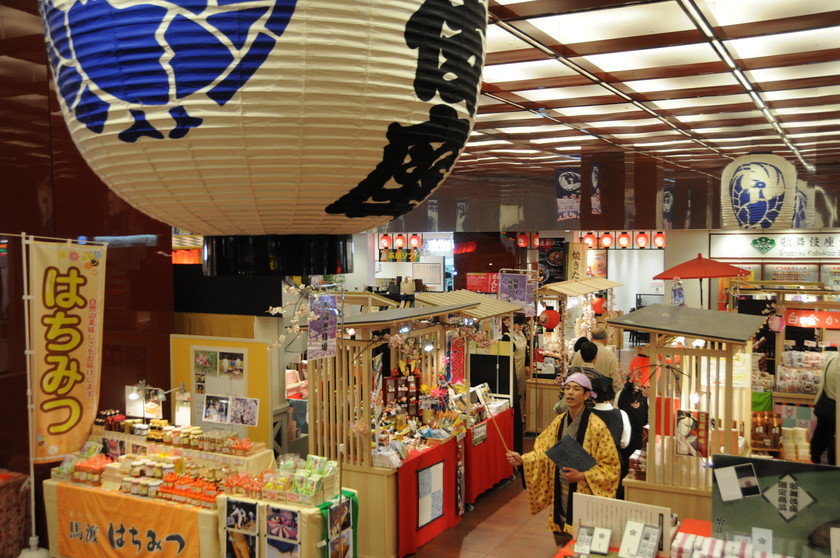 During intermissions, you can grab a bento box or snacks from Kobikicho Hiroba (Kobikicho Square), located on the second basement floor. While eating is not allowed during the performance, these refreshments make for a great way to complete the experience. Opera glasses are also available for rent, so you can catch every intricate detail of the actors’ expressions and elaborate costumes.
During intermissions, you can grab a bento box or snacks from Kobikicho Hiroba (Kobikicho Square), located on the second basement floor. While eating is not allowed during the performance, these refreshments make for a great way to complete the experience. Opera glasses are also available for rent, so you can catch every intricate detail of the actors’ expressions and elaborate costumes.
Souvenirs to Make Your Kabuki Experience Even More Memorable
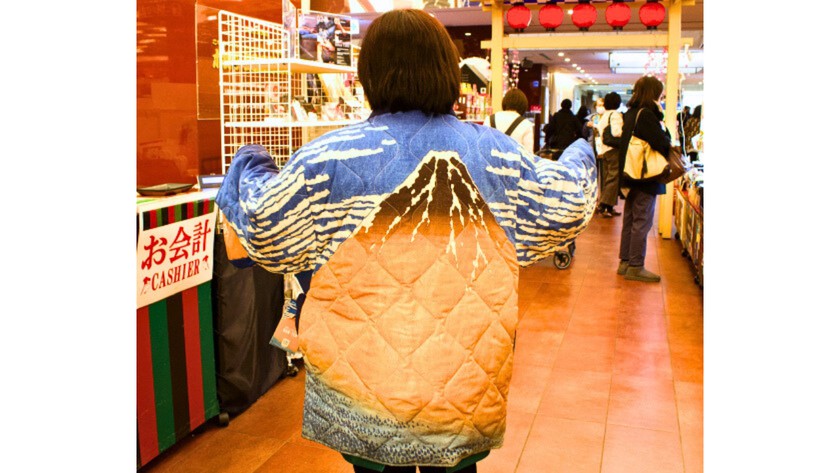 No trip to Kabukiza Theatre is complete without picking up a few unique souvenirs. For a deeper dive into kabuki culture, head to Kobikicho Square, located on the second basement floor. Part shopping hub, part cultural experience, this space offers everything from high-end kimono accessories and seasonal items such as stylish hanten coats (traditionally indoor wear, but fashionable enough for the streets) to an extensive selection of unique postcards.
No trip to Kabukiza Theatre is complete without picking up a few unique souvenirs. For a deeper dive into kabuki culture, head to Kobikicho Square, located on the second basement floor. Part shopping hub, part cultural experience, this space offers everything from high-end kimono accessories and seasonal items such as stylish hanten coats (traditionally indoor wear, but fashionable enough for the streets) to an extensive selection of unique postcards.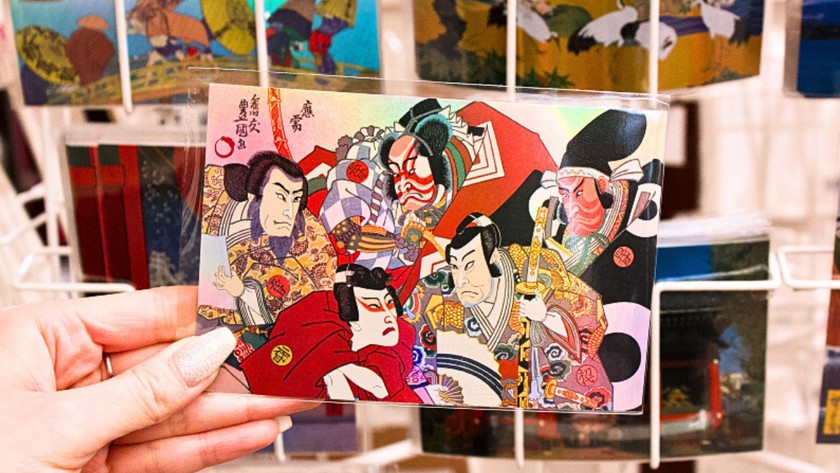 You’ll find vibrant prints, tote bags and other accessories featuring kabuki scenes, old-fashioned woodblock prints, and scenic images of Japan, all capturing the essence of Japanese artistry. Whether you’re looking for a keepsake to commemorate your visit or a thoughtful gift to share back home, these beautifully crafted items offer a perfect way to bring a piece of Japan’s rich heritage with you.
You’ll find vibrant prints, tote bags and other accessories featuring kabuki scenes, old-fashioned woodblock prints, and scenic images of Japan, all capturing the essence of Japanese artistry. Whether you’re looking for a keepsake to commemorate your visit or a thoughtful gift to share back home, these beautifully crafted items offer a perfect way to bring a piece of Japan’s rich heritage with you.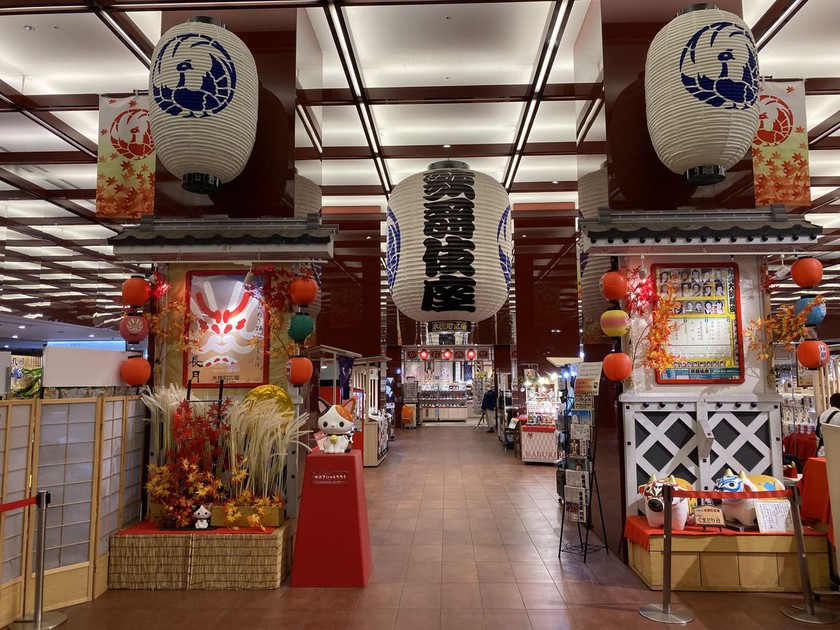 If you’re not seeing a show but still want a taste of the experience, Kobikicho Square is open to all visitors. Just look for the giant white lantern with Kabukiza (歌舞伎座) written on it.
If you’re not seeing a show but still want a taste of the experience, Kobikicho Square is open to all visitors. Just look for the giant white lantern with Kabukiza (歌舞伎座) written on it. The first-floor Souvenir Shop Kobikicho is also packed with seasonal sweets, freeze-dried miso soup packs, kabuki-themed t-shirts, fans, and playing cards. One of the most popular finds is the ever-changing lineup of Snoopy in kabuki garb magnets and file folders—quirky, collectible, and easy to pack.
The first-floor Souvenir Shop Kobikicho is also packed with seasonal sweets, freeze-dried miso soup packs, kabuki-themed t-shirts, fans, and playing cards. One of the most popular finds is the ever-changing lineup of Snoopy in kabuki garb magnets and file folders—quirky, collectible, and easy to pack.
How to Buy Kabukiza Theatre Tickets: A Beginner’s Guide
Getting your hands on Kabukiza tickets is straightforward. Shochiku’s multilingual online ticket service allows you to book in advance. If online reservations show a “sold out” message, check directly with the Kabukiza Theatre box office—same-day tickets might still be available.For those unsure about committing to a full show, single act seats on the fourth floor offer an easy and affordable way to experience kabuki. These are sold on the day of the performance at the theater box office. English-speaking staff are on hand to help, making the process smooth for international visitors.
Kabukiza Theatre Etiquette & Important Tips
Kabuki performances are immersive, and a little etiquette ensures everyone enjoys the show. Here’s what to keep in mind:•No dress code, but be respectful. Smart casual is a safe bet—skip the big hats or hairstyles that might block someone’s view.
•Arrive early. Be in your seat at least five minutes before the curtain rises. Latecomers may have to wait for an appropriate moment to be seated.
•Switch off your smartphone. No photos, no videos, no buzzing notifications.
•Keep noise to a minimum. Talking, unwrapping candy, or rustling plastic can be distracting, especially during quiet scenes.
•Intermission is snack time. No eating or drinking in the theater, but feel free to enjoy refreshments in your seat or designated areas.
A visit to Kabukiza Theatre isn’t just about seeing a show—it’s about stepping into a world of theatrical tradition, artistic mastery, and pure spectacle. Whether you’re in it for the elaborate costumes, the dramatic performances, or just the experience of sitting in a legendary theater in the heart of Ginza, kabuki is worth adding to your Tokyo itinerary.
How to Get to Kabukiza Theatre from HOTEL TAVINOS Hamamatsucho
[By Train] approximately 5 minutes from Daimon Station to Higashi-Ginza Station via the Toei Subway Toei Asakusa Line.Kabukiza Theatre
Address: 4-12-15 Ginza, Chuo-ku, Tokyo
Hours: Performance schedules vary. Box office opens at 10:00 am
Access: Directly connected to Higashi-Ginza Station (Exit 3) via the Tokyo Metro Hibiya Line and the Toei Subway Toei Asakusa Line.
Website: https://www.kabukiweb.net/theatres/kabukiza/
Writer
Lisa Wallin
Acurious sojourner, Lisa Wallin has lived in Japan for about 15 years, along with 7 other countries. She has an insatiable appetite for local narratives, with a focus on regional culture, crafts and food. When not chasing stories, she enjoys coffee, visiting shrines, and exploring the country both with and without her dogs.
